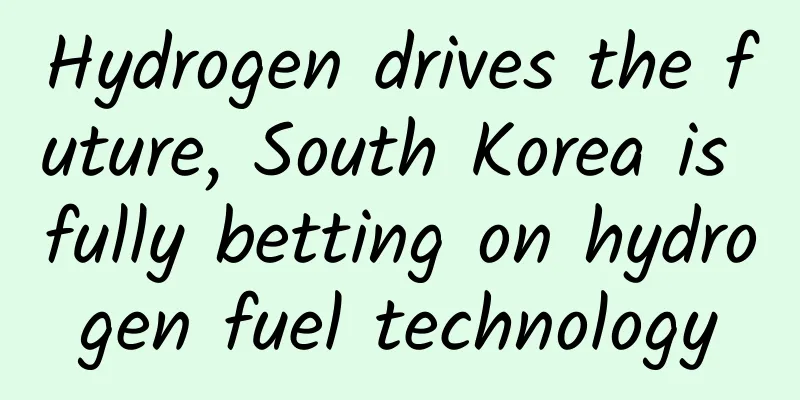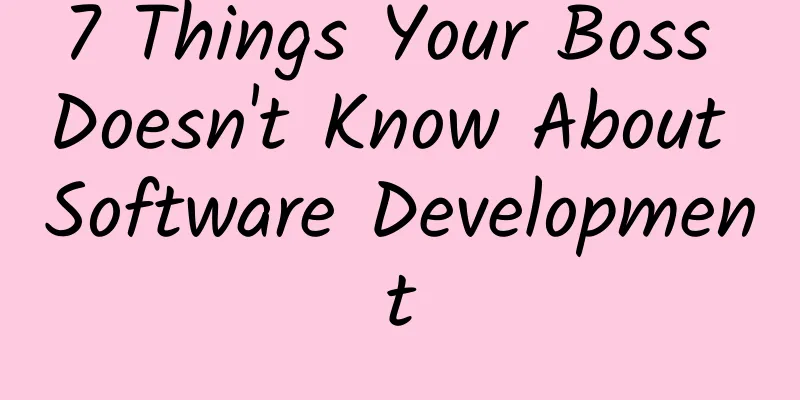Hydrogen drives the future, South Korea is fully betting on hydrogen fuel technology

|
Hydrogen fuel cell vehicles use hydrogen as fuel and emit water. The entire process is energy-saving, environmentally friendly and zero-emission, and has always been hailed as the "ultimate environmentally friendly car." In addition, hydrogen fuel cell vehicles also have the advantages of high efficiency and long driving range. According to the "Research Report on the Future Development Trend of Hydrogen Energy" recently released by the International Hydrogen Energy Commission, it is estimated that by 2030, the number of fuel cell passenger vehicles in the world will reach 10 million to 15 million. The huge market potential has led countries and major companies to increase their research and development in the hydrogen energy industry, hoping to ensure or achieve energy security through the development of hydrogen energy and to gain a commanding position in the international energy field, and hydrogen fuel cell vehicles are an important part of this. Starting from this issue, this newspaper will launch the "Hydrogen Future" column to analyze the development status and prospects of hydrogen fuel cell vehicles from multiple perspectives such as policy, market, and technology. At present, the governments of Japan, South Korea and other countries are vigorously developing hydrogen fuel cell vehicles. At present, Japan seems to be ahead, but South Korea is not to be outdone. According to the Korea Herald, the Ministry of Trade, Industry and Energy of South Korea recently held a meeting and announced that the South Korean government and domestic related companies have decided to invest 2.6 trillion won (about 2.33 billion US dollars) in the next five years to establish a public-private partnership to accelerate the development of the country's hydrogen fuel cell vehicle ecosystem and increase the number of hydrogen refueling stations to help hydrogen fuel cell vehicles become popular as soon as possible. Spending 2.6 trillion won to catch up with Japan South Korea's Minister of Trade, Industry and Energy Park Young-ok said at the meeting that the funds will be used to build hydrogen refueling stations, construct hydrogen fuel cell stack factories, produce hydrogen fuel cell buses, and develop hydrogen storage systems. Hyundai Motor Group Vice Chairman Kwon Moon-sik and Korea Gas Corporation President Lee Jae-hoon also attended the meeting and said that Hyundai Motor and Korea Gas Corporation will fully support the plan, and many other related companies will also participate. At the meeting, Park Young-ok announced: "By the end of this year, the government will introduce relevant policies and regulations, and provide pilot projects so that people will have the opportunity to experience hydrogen fuel cell vehicles firsthand." He added that due to the small number of hydrogen refueling stations across South Korea, few people use them, resulting in low consumer acceptance of hydrogen fuel cell vehicles, and naturally sales cannot keep up. Like Japan, as a country with relatively scarce energy, South Korea also attaches great importance to the development and utilization of renewable energy. At present, Japan is ahead in the use of hydrogen energy. The government has made the use of hydrogen energy a national policy, hoping to build a "hydrogen society". In February this year, the New Energy and Industrial Technology Development Organization (NEDO) of Japan set a goal to popularize fuel cell vehicles in Japan by 2040, increasing its ownership from the current approximately 2,000 to 3 million to 6 million, and increasing the driving range of hydrogen fuel cell vehicles to 1,000 kilometers. At present, 101 hydrogen refueling stations have been built in Japan, and it is expected to reach 320 by 2025. South Korea currently has 170 hydrogen fuel cell vehicles, of which 140 are for non-commercial use; 16 hydrogen refueling stations, of which 9 are used for research and development and production. South Korea is making every effort to catch up, and plans to build 310 hydrogen stations by 2022 to provide fuel for 16,000 hydrogen fuel cell vehicles. In addition, part of the 2.6 trillion won will be used to build a dedicated production line for hydrogen fuel cell vehicles, and about 125 billion won will be used to support the research and development of major components such as fuel cell stacks, including the local production of fuel cell stacks. The hydrogen fuel cell stack is equivalent to the engine of an internal combustion engine vehicle and is the core part of a hydrogen fuel cell vehicle. It can fuse oxygen and hydrogen to generate electricity. In August last year, the Hyundai Mobis auto parts factory in Chungju City, South Korea was completed. The total investment of the factory is about 70 billion won and covers an area of nearly 13,000 square meters. The factory is mainly used to manufacture hydrogen fuel cell stacks, with an annual output of 3,000 powertrain battery modules, that is, it has the capacity to produce 3,000 hydrogen fuel cell vehicles annually. It entered trial operation in September last year. Hyundai Motor said that according to market needs, the factory can be expanded to a production capacity of tens of thousands of vehicles in the future. Leveraging first-mover advantage to build a hydrogen society In addition to the above aspects, the South Korean government also plans to increase investment in hydrogen fuel cell buses and put them into use in public transportation. At present, the South Korean government has cooperated with five regional governments, including Seoul and Ulsan, and it is expected that hydrogen fuel cell buses will be running on the central routes of these cities by next year. By 2022, the number of hydrogen fuel cell buses in South Korea is expected to reach 1,000. Recently, Hyundai Motor has begun producing hydrogen fuel cell buses at its Jeonju plant in South Jeolla Province, South Korea. In order to achieve a more stable supply, the government plans to further reduce the price of hydrogen fuel to make it cheaper than gasoline, and the cost of hydrogen fuel cell vehicles is expected to drop to 70 won per kilometer. Although Japan is ahead in the field of hydrogen fuel cell vehicles, South Korea is actually the first to "take the lead". In 2005, Hyundai Motor of South Korea began to focus on the research of hydrogen fuel cell vehicles; since 2008, the South Korean government has begun to implement a low-carbon green growth strategy and increased investment in the research and development of hydrogen fuel cell vehicles; in 2011, the first large-scale hydrogen fuel cell power station in Busan began trial operation; in 2013, Hyundai Motor launched the world's first mass-produced hydrogen fuel cell vehicle - Tucson FCEV. It can be seen that South Korea has a first-mover advantage in the development of hydrogen fuel cell vehicles, and the country hopes to further consolidate its advantages and win the future battle in the field of power batteries. Like Japan, the Korea Hydrogen Convergence Alliance (H2KOREA) announced its plan to build a hydrogen economy and society in Korea at the PyeongChang Forum held in Korea in February this year. A hydrogen economy and society refers to a zero-CO2 emission society that uses hydrogen as the main energy source, such as solar energy, wind energy, liquefied natural gas, liquefied petroleum gas, and water to produce hydrogen. In order to achieve this goal, the South Korean government has also set up relevant functional departments: the Ministry of Renewable Energy to help hydrogen development, the Ministry of Automobiles and Aviation to help the development and distribution of hydrogen fuel cell vehicles, and the Ministry of Energy Security responsible for the safety of hydrogen refueling stations under the Ministry of Industry; the Clean Air Planning Department responsible for the construction of hydrogen refueling stations under the Ministry of Environment; the Road Operation Department responsible for the distribution of hydrogen refueling stations and the Automobile Management Department responsible for the safety of hydrogen fuel cell vehicles under the Ministry of Land, Infrastructure and Transport. In addition, the South Korean parliament is brewing a hydrogen energy bill, which will involve a comprehensive plan for the hydrogen energy industry, a budget plan, infrastructure construction, and various applications involving hydrogen energy. It is reported that the bill will be submitted and reviewed in a planned manner. The South Korean government hopes to establish a market-competitive hydrogen energy price and supply system through the commercialization of hydrogen refueling stations, reasonable hydrogen energy prices, and supply management plans. Modern cars are accelerating their popularity by "looking for a partner" The strong support of the South Korean government is important in building a hydrogen energy society, but in the field of hydrogen fuel cell vehicles, it is also inseparable from the help of Hyundai Motor, the largest automaker in South Korea and the fifth largest automaker in the world. As mentioned above, Hyundai Motor launched the world's first mass-produced hydrogen fuel cell car Tucson FCEV in 2013. The car has been sold in 18 countries around the world, laying a good market foundation for the launch of its new generation of fuel cell vehicles. In August last year, Hyundai Motor released the second-generation hydrogen fuel cell SUV, NEXO. This car not only has a driving range of more than 800 kilometers, but also has an environmentally friendly powertrain system that has reached the world's leading level by improving the utilization rate of hydrogen and the efficiency of components. In February this year, Hyundai Motor announced that it will sell 10,000 NEXO hydrogen fuel cell vehicles in the global market by 2022. The car is currently on sale in South Korea and will be sold to major markets such as Europe and the United States within the year. Chung Eui-sun, vice chairman of Hyundai Motor Group, said: "Although the demand for hydrogen fuel cell vehicles is growing slowly at present, the market will usher in rapid growth in the next 20 years." In order to further accelerate the popularization of hydrogen fuel cell vehicles, Hyundai Group recently signed an agreement with German automaker Audi. The two parties reached a number of patent cross-licensing agreements, including fuel cell vehicle and component-related technologies. After reaching the agreement, Hyundai Motor and Audi will jointly promote the development of fuel cell technology to achieve the future sustainable development of the automotive industry. Although the agreement was signed between Hyundai Motor and Audi, it also benefits the parent companies and subsidiaries of both parties, including Kia Motors and Volkswagen Group. In the future, the companies will share relevant patents to increase their share in the hydrogen fuel cell vehicle market. In terms of hydrogen fuel cell technology, Hyundai has accumulated rich experience through two mass-produced models, Tucson FCEV and NEXO, and Audi is the brand responsible for the research and development of fuel cell technology in the Volkswagen Group. In this cooperation, it will directly obtain Hyundai Motor's fuel cell technology patents. As a winner of Toutiao's Qingyun Plan and Baijiahao's Bai+ Plan, the 2019 Baidu Digital Author of the Year, the Baijiahao's Most Popular Author in the Technology Field, the 2019 Sogou Technology and Culture Author, and the 2021 Baijiahao Quarterly Influential Creator, he has won many awards, including the 2013 Sohu Best Industry Media Person, the 2015 China New Media Entrepreneurship Competition Beijing Third Place, the 2015 Guangmang Experience Award, the 2015 China New Media Entrepreneurship Competition Finals Third Place, and the 2018 Baidu Dynamic Annual Powerful Celebrity. |
>>: BMW and Baidu join forces to promote the development of autonomous driving ecosystem
Recommend
Decoding the consumer psychology used by Pinduoduo in its promotions
You know exactly what to do to succeed, and then ...
Mercedes-Benz S-Class new cars recalled due to internal tie rod risk, official apology rare
Last year alone, Mercedes-Benz was called the &qu...
Product and operation analysis of the popular social product SOUL!
Everyone says that 2018 is a cold winter for the ...
Fly high into the sky and see the green mountains and clear waters on earth!
On August 4, the world's first forest carbon ...
Zhihu’s operational strategy: What are the chances of fighting against content “entropy increase”?
The content track remains hot. First, Baidu and B...
How to write the copy for May Fourth Youth Day? Share 15 articles!
According to the latest World Health Organization...
Analysis of Pinduoduo’s business model, products and usage
Pinduoduo is a platform e-commerce company with a...
Brand marketing: 3 ways to make your brand younger
Brand rejuvenation is one of the buzzwords in the...
Photos from the sky! The first batch of 10 images from the Science Satellite 1 were officially released in Beijing
On December 20, 2021, the first batch of 10 image...
This kind of "red bag" is painful and swollen, and it is really dangerous to squeeze it! Learn these and go to the hospital less often →
If we talk about the most painful skin problem, b...
What to do when new energy vehicles encounter cold waves, rain and snow? You must read this for your family!
On January 23, the Central Meteorological Observa...
BeOS is the operating system that almost killed Apple
[[135855]] In 1997, Apple acquired NeXT, and Jobs...
iOS 9 adds UIStackView official documentation translation
[[138768]] 1. Inheritance, Compliance, Affiliatio...
How much does it cost to rent a server with different bandwidths?
With the development of my country's network,...
Virtual operators that are popular but not profitable need to break through by rapidly iterating their products
Originally, the media and industry's attentio...









